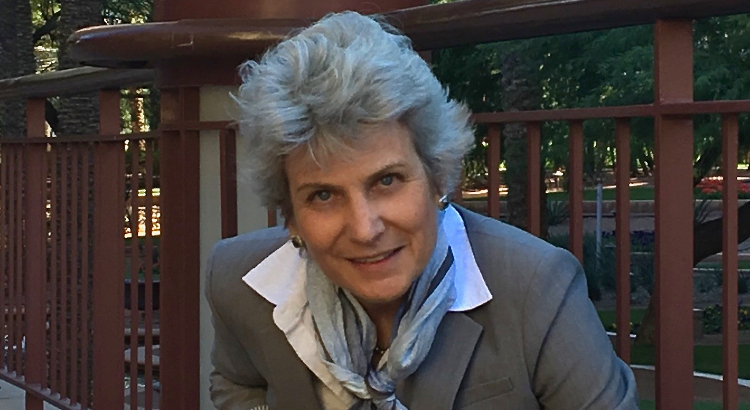 Stephanie Taylor was a Harvard-trained, pediatric oncologist when she became concerned during the 1990s that her patients were coming down with respiratory infections.
Stephanie Taylor was a Harvard-trained, pediatric oncologist when she became concerned during the 1990s that her patients were coming down with respiratory infections.
“I decided I needed to understand more about buildings,” she says. Eventually, she returned to school, this time for a masters in architecture and a certification in infectious diseases.
Taylor is now recognized as one of the nation’s foremost researchers on airborne viral infections in buildings. As better building advocates respond to the covid-19 pandemic, she’s been asked to serve on two organization’s task forces formed to update building standards to deal with the crisis — one by the International WELL Building Institute, the other by ASHRAE.
(This interview was conducted by phone with follow-ups via email. It was edited for length and clarity, and I threw in a few relevant links. It’s part of an ongoing series of Q&A’s with design and research leaders on covid-19 and buildings. Check out all of them here.)
How do you see covid-19 affecting building design?
This pandemic could be a turning point, where we start looking at the role of a building on our health. We aren’t managing the indoor environment to maintain health, and we don’t do enough research to understand that relationship.. ….
Maybe, human health will finally become a building-performance metric. Right now, it’s all about things like energy consumption. But I believe buildings will begin to monitor how buildings are affecting people. We need to ask {questions like]: How many people get asthma? How many people have sinus infections? How many people get colds? The flu? Autoimmune disorders? How many people suffer from stress?
You and other researchers have drawn a connection between low relative humidity and viral-disease transmission. Does overly dry air actually make that much of a difference?
Yes, lower humidity does make a big difference. Below 40 percent [relative humidity] you see:
- increased number of infectious particles in the air
- increased viability (infectivity) of those particles with many pathogens, including SARS-CoV-2
- impaired human respiratory immunity.
These are three essential reasons to maintain RH 40-60 percent
Why are there more infectious particles in the air if it’s drier?
To put it the other way, in moderately humid air, the particles become more hydrated. They fall to the ground and you can remove them.
The EPA recommends a relative humidity range in all buildings 30 percent to 60 percent. ASHRAE recommends that indoor humidity never go above of 65 percent. Are you saying you’d like to see this changed, and if so how?
This definitely needs to be changed. Human health has not been prioritized by ASHRAE. Furthermore, we did not know until recently exactly how harmful low RH is for people, and conversely, how the bad microbes (pathogens) love low RH.
Placing such an emphasis on a minimum relative humidity could be a major change for designers, particularly for mechanical engineers.
I think it’s going to be. And honestly it’s exciting because it’s something we can do. The consequences could be pretty profound. I think our buildings will be designed differently. … Figuring out how healthy and productive a human being is a lot harder than reading an energy meters.
The dry-bulb humidity level in my house currently is 55 percent. Mechanical engineers typically design to 50 percent. So aren’t they already doing the right thing? Are there exceptions to this that you’re concerned about?
I am concerned about very wide deviations from “typically.”. The common sentiment among engineers is “the only good humidifier is one that is turned off!.”
When you maintain indoor RH of 40 percent in cold climates with imperfect insulation or older windows you can get frost on the windows or condensation within walls where warm humidified air meets a cold surface or air. When you have liquid water in a building, mold growth can occur, and people are understandably worried about this.
Ironically, if you already have mold and turn the humidity way down (or dehumidify, you really get into trouble. This is when the fungal hyphae or spores become airborne and cause the worst respiratory or allergy symptoms. The solution, get rid of the mold, maintain RH 40-60 percent and improve your insulation.
One way engineers make buildings both super-efficient and comfortable is by raising temperature set points while lowering the humidity target. Is that an example of the kind of energy-efficiency strategy that could conflict with the health of occupants?
Yes, completely. Better to raise the humidity and lower the temperature a few degrees when you have people in the building.
What about other HVAC-related issues, such as air exchange rates and ventilation? Is there evidence that recirculating air actually increases transmission of the virus?
This is a logical worry, but at least with covid-19, there is no evidence that this happens.
Nevertheless, people are worried about it. I think the best solution is to balance outdoor ventilation with indoor air recirculation to achieve RH 40-60 percent. In addition, perhaps use filtration or other air disinfection strategies with your HVAC system. We have to balance outdoor air ventilation, indoor humidity, heat and energy consumption. We live in an imperfect world!
What about natural ventilation? Do you expect more of a push for, say, operable windows?
Yes, there is already movement for more outdoor ventilation through windows. It is good to open windows without overly sacrificing indoor humidity and reasonable temperatures, and without making energy use exorbitant.
PHOTO AT TOP: Oncologist and architect Stephanie Taylor. Courtesy of Stephanie Taylor.


